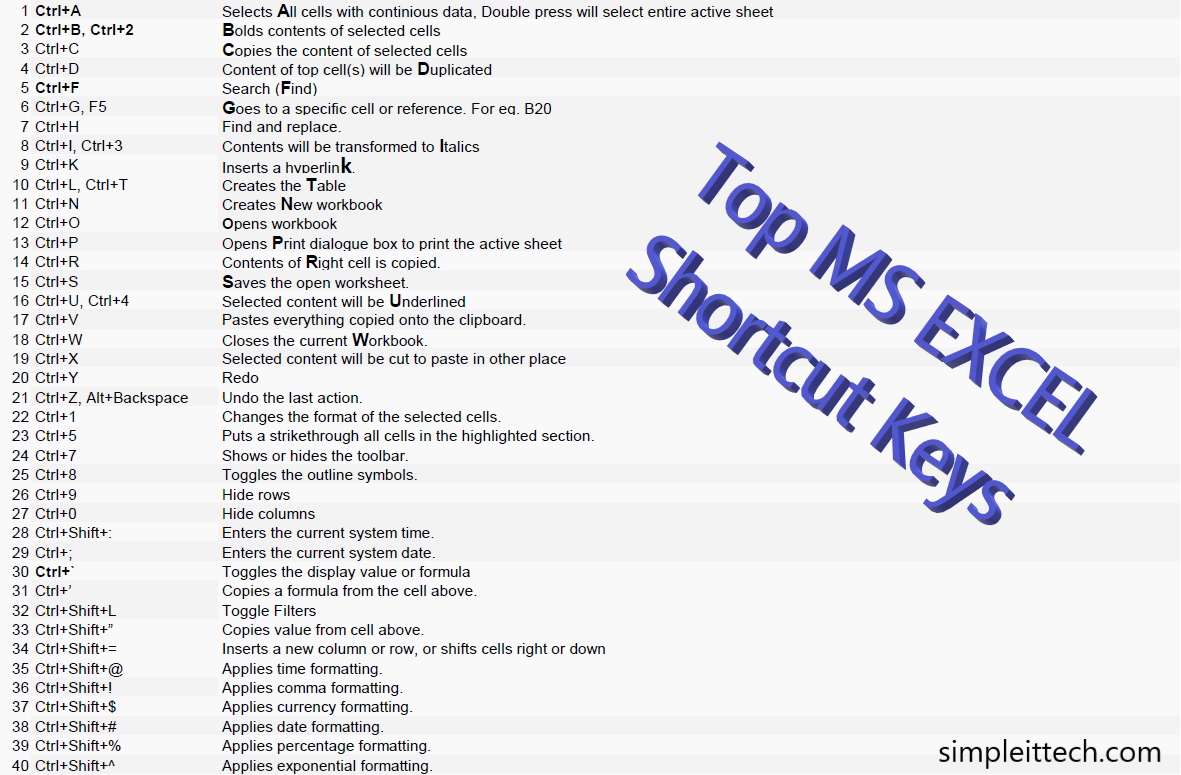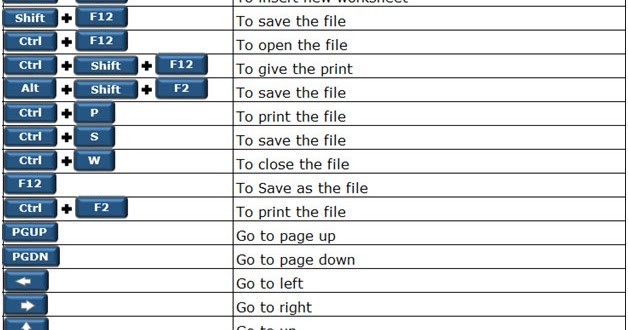

They’re not particularly advanced, but they help you get around Excel just a bit easier. These keyboard shortcuts are used for manipulating workbooks, getting help, and other interface-related actions.
Delete : Remove the contents of a cell, selected data, or selected cell range. Ctrl + V or Shift + Insert : Paste contents of a cell, selected data, or selected cell range.  Ctrl + C or Ctrl + Insert : Copy contents of a cell, selected data, or selected cell range. Ctrl + S : Save the currently open workbook. Ctrl + O : Open a workbook saved on your computer or an online source. Ctrl + F : Search in a spreadsheet, or use Find and Replace. Let’s start with the basics and see how you can use basic shortcuts to speed up your Excel flow: These shortcuts aren’t specific to Excel only - they work in most other applications and on websites as well! Chances are, you might have even heard of them before. The shortcuts below are very basic, yet very powerful. Note: These shortcuts were carefully selected from Top 51 Excel Templates to Boost Your Productivity that you can check out to boost your Excel Productivity. So, we made a list of the most useful Excel shortcuts you should always have on-hand, or in your memory. Memorizing each and every one of them is pretty much impossible. However, since Excel is a very complex application, it has hundreds of shortcuts for you to use. In Excel, these shortcuts are used to expedite common operations by reducing input sequences to a few keystrokes. In computers, a keyboard shortcut is a means for performing one or more commands using the keyboard, that would otherwise be accessible through some sort of user interface.
Ctrl + C or Ctrl + Insert : Copy contents of a cell, selected data, or selected cell range. Ctrl + S : Save the currently open workbook. Ctrl + O : Open a workbook saved on your computer or an online source. Ctrl + F : Search in a spreadsheet, or use Find and Replace. Let’s start with the basics and see how you can use basic shortcuts to speed up your Excel flow: These shortcuts aren’t specific to Excel only - they work in most other applications and on websites as well! Chances are, you might have even heard of them before. The shortcuts below are very basic, yet very powerful. Note: These shortcuts were carefully selected from Top 51 Excel Templates to Boost Your Productivity that you can check out to boost your Excel Productivity. So, we made a list of the most useful Excel shortcuts you should always have on-hand, or in your memory. Memorizing each and every one of them is pretty much impossible. However, since Excel is a very complex application, it has hundreds of shortcuts for you to use. In Excel, these shortcuts are used to expedite common operations by reducing input sequences to a few keystrokes. In computers, a keyboard shortcut is a means for performing one or more commands using the keyboard, that would otherwise be accessible through some sort of user interface. 
Cut down unnecessary seconds spent browsing through menus and use shortcuts instead. Using shortcuts is one of the most effective ways of speeding up your workflow. Keyboard shortcuts have been around for as long as Microsoft Excel itself.







 0 kommentar(er)
0 kommentar(er)
